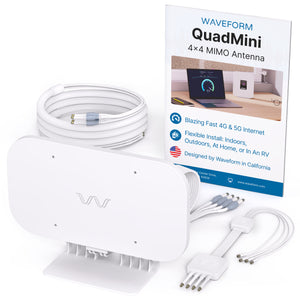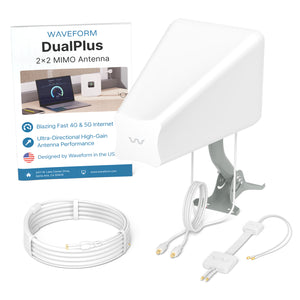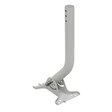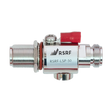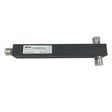From Prudhoe Bay oil fields to fish-processing docks in Dutch Harbor, the state's economy runs on large, often remote facilities that cannot rely on public cellular or traditional WiFi. One vivid example is an open-pit mine on the Seward Peninsula where autonomous haul trucks and IoT sensors generate terabytes of data every day. Those operations demand low-latency, sitewide coverage that commercial carriers simply do not deliver north of the 60th parallel.
Wireless Challenges Across Alaska
Alaska's geography creates unique RF obstacles. Mountain ranges, dense boreal forests, and extreme weather interfere with line-of-sight links while permafrost complicates trenching for fiber backhaul. Seasonal population swings at ports and canneries add further capacity spikes. In rural villages, microwave backhaul is common, yet bandwidth is precious and latency is high.
Private 5G tackles these hurdles by combining high-power small cells with dedicated Citizens Broadband Radio Service (CBRS) spectrum. A single outdoor radio can cover tens of square miles in flat tundra or several square blocks in urban Anchorage. Because the spectrum is lightly licensed, you are shielded from interference and do not pay per-gigabyte carrier fees.
Industries that stand to benefit include:
- Oil and gas production platforms that need deterministic connectivity for SCADA and worker safety
- Mining, where autonomous drills and drones require seamless handoff while moving across large pits
- Logistics hubs in Anchorage and Fairbanks that must track containers year-round despite metal obstructions
- Healthcare campuses in Juneau and Bethel that backhaul imaging and patient telemetry across multiple buildings
- Remote research stations that depend on battery-powered sensors and cannot afford frequent maintenance visits
Why Alaska Organizations Choose Private 5G
WiFi 6 or 7 is excellent indoors but loses efficiency outdoors and in high-mobility settings. Signal levels drop off rapidly at 5 GHz, and every additional AP means another Ethernet run, an issue when the ground is frozen eight months of the year. Public LTE and 5G from AT&T, Verizon, and T-Mobile cover Alaska's highways and population centers but leave blind spots at industrial sites. Even where signal exists, you share bandwidth with tourists streaming video from Denali.
Private 5G solves those shortcomings:
- Coverage: CBRS small cells transmit at higher power (up to 47 dBm EIRP) than WiFi access points. One mast can reach employees a mile away, perfect for tank farms and runways.
- Capacity: You control the spectrum, so forklifts, cameras, and tablets never compete with public traffic.
- Security: The network core sits on-premise or in your data center, integrating with VLANs and existing firewalls.
- Mobility: The 3GPP handover protocol keeps devices attached while moving at highway speeds, unlike WiFi roaming that often drops VoIP calls.
For a deeper technical overview, our Private Networks Guide explains spectrum options, latency metrics, and device compatibility.
How Private 5G Compares To Public Cellular And WiFi
Latency: Private 5G cores process traffic locally, so round-trip times are typically 15-25 ms. Public 5G routes packets through a carrier gateway in the Lower 48, adding 50-100 ms. WiFi achieves low latency only when the RF environment is quiet, which is seldom true in shipyards crowded with metal hulls and radar systems.
Cost: Public cellular charges per SIM and per gigabyte. Streaming a single 4K security camera can run thousands of dollars monthly. With private 5G you own the spectrum and pay only for the infrastructure. Compared with WiFi, you need far fewer radios outdoors, offsetting the higher cost per radio.
Reliability: WiFi clients select whichever SSID looks strongest, often bouncing between APs. Private 5G devices stay locked to the best cell and report signal statistics to the core, enabling proactive maintenance. If a radio fails, others automatically increase power to fill the gap.
Our End-To-End Design And Install Process
-
Rapid Site Snapshot
You send a .KMZ boundary or floor plan, a brief description of the environment, and the number of devices. Within three business days we return a high-level RF heatmap, equipment list, and budgetary range.
-
Detailed Proposal
Next, our engineers build an RF model, run propagation studies, and refine the bill of materials. We present coverage predictions, backhaul requirements, and an install timeline that fits Alaska's construction season.
-
Turnkey Deployment
Our field team stages equipment at our lab, then mobilizes once the ice road or barge schedule permits. We handle pole mounting, PoE runs, SIM provisioning, and user-acceptance testing. Day one coverage is guaranteed.
-
Ongoing SLA
We monitor cell KPIs around the clock and ship cold-spares to your site. Firmware updates and spectrum grant renewals are included.
Because we are vendor-neutral, we can pair a Celona or Highway9 core with Airspan radios and Zebra handhelds, or select any mix that best meets your specs. All devices arrive preconfigured so your staff simply powers them on.
Proven Results Across Demanding Sites
While every project is unique, our experience spans healthcare, education, and heavy industry. For example, we recently completed a wireless deployment for Kaiser Permanente's San Jose Medical Center in California's Silicon Valley. That hospital required uninterrupted coverage throughout multiple buildings filled with RF-blocking materials. The success of that project demonstrates our ability to design networks that coexist with sensitive medical equipment and comply with strict downtime thresholds.
Transparent Pricing For Indoor And Outdoor Coverage
Indoor private 5G networks typically cost $1.00 to $2.50 per square foot delivered turnkey, including radios, core licensing, and installation. Costs decrease as square footage increases because each additional radio covers more area than an added WiFi AP.
Outdoor deployments offer even stronger economics. In relatively flat areas, a three-sector small-cell on a 60-foot mast can cover a 1.5-mile radius. A complete system with power, backhaul, and core can price out near $100,000, a fraction of the cost of trenching fiber or installing hundreds of WiFi APs on light poles.
Equipment financing, multiyear SLAs, and temporary "network in a box" kits are available for seasonal camps and exploration crews.
Next Steps
Waveform is a connectivity integrator specializing in turnkey Private 5G network solutions. Call us at (800) 637-4049 or get a custom private 5g design and quote today. Reliable, secure coverage across Alaska is closer than you think.
























